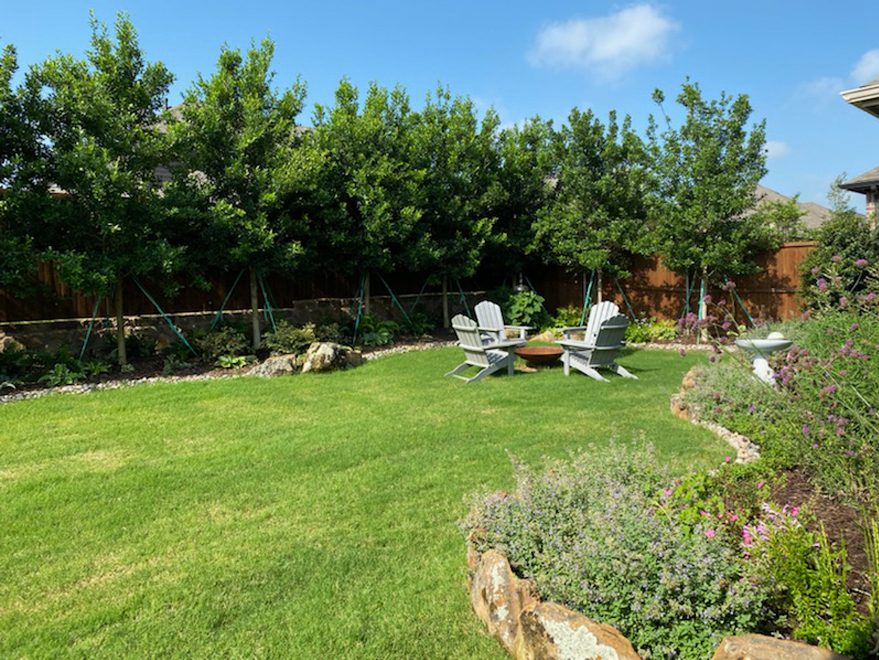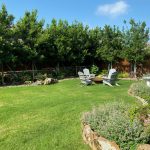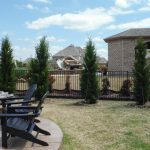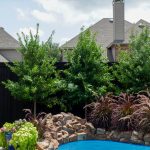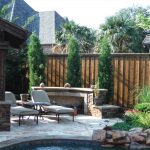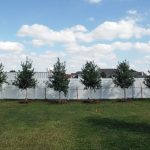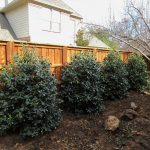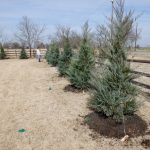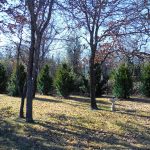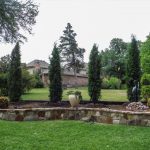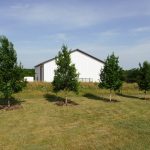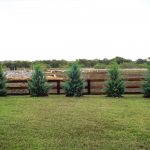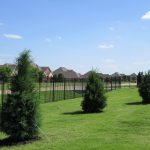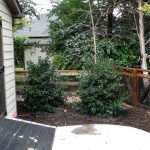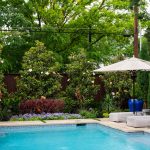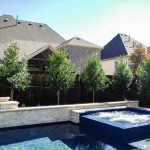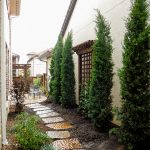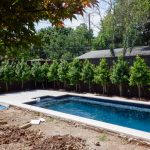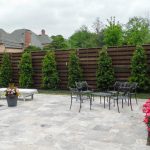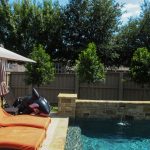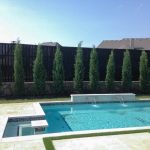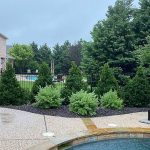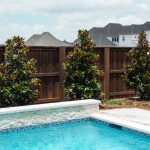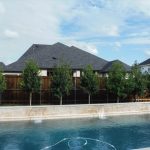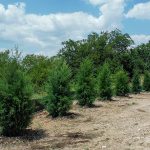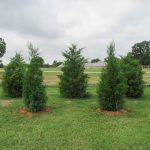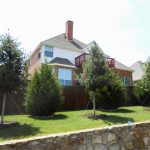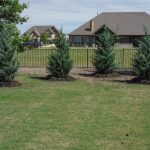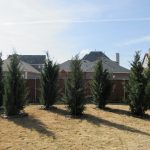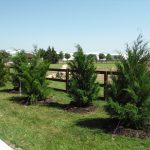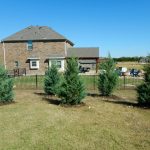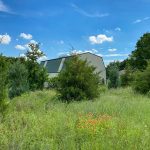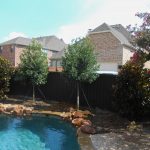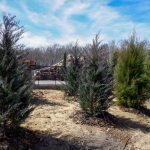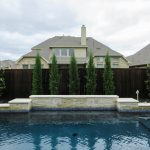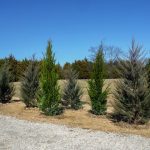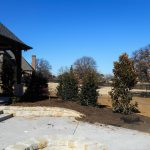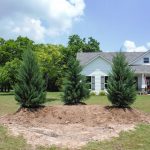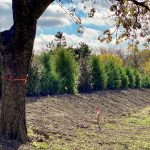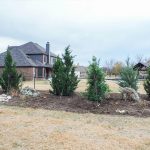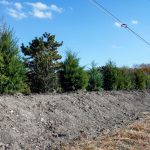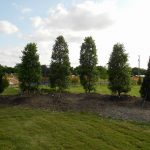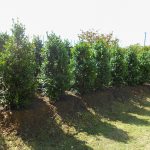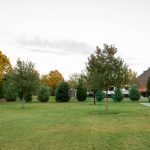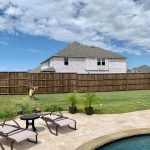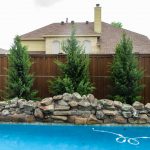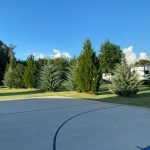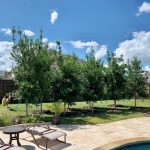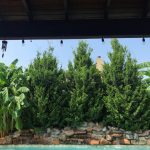Privacy Screens are the number one calls that we get and we know that the shrinking backyards and extra road traffic are leaving everyone feeling a little exposed these days. We all want that feeling of solitude when at our homes and that can be hard to do when you can see right into the neighbor’s window. Privacy screens and living walls are an attractive way to create your own oasis in your backyard and disconnect from the busy world around you.
When planning a screen here are the most important things that you will need to consider to get the planning process started:
What trees are recommended for privacy screens in North Texas?
Eagleston Holly – Grows to 20’H x 14’W
Eastern Red Cedar- Grows to 25’H x 20’W
Eastern Red Cedar ‘Brodie’- Grows to 25’H x 12’W
Eastern Red Cedar ‘Burkii’- Grows to 25’H x 20’W
Eastern Red Cedar ‘Taylor’- Grows to 30’H x 4’W
Little Gem Magnolia- Grows to 20’H x 14’W
Nellie R. Stevens Holly- Grows to 16’H x 12’W
Oakland Holly- Grows to 16’H x 7’W
How much space do I have to work with?
When thinking about how much space you have to work with it’s important to find plants that are not too wide for the available space, like when planting between a pool and fence. If you only have 3′ to work with then you will have a much shorter list of options than someone with an acre for example.
How urgently do I need the privacy?
If you feel that the screening is an urgent matter then that tells you that you will likely want to buy trees of a large size and have them installed closer together to fill in that space faster.
What is my budget
In order to keep within the budget you might consider spacing the trees out further so that less are needed and you can go with the smaller sizes available. Make sure to view our online price list to see all the available options along with their specs and costs.
What design style is the best?
This one is going to be a personal preference. While most privacy screens use the same variety of tree and are installed in a straight row, lots of customers like to explore and create various designs using one or more tree types. You can use a window formation or create a more natural looking pattern by mixing up the varieties and spacing.
How far apart should I space the trees?
Most customers space their trees 6-8′ trunk to trunk but some varieties like the Eastern Red Cedar ‘Taylor’ only get to 4′ wide at maturity so we recommend planting those around 3-3.5′ trunk to trunk if you want them to create a full screen. If you are windowing trees, then you would space them out further. If you want more immediate screening, then you would place them closer together. If you are planting a variety that grows to around 20′ wide at maturity, then you can always space them closer if the timeline is not as urgent.
How far apart should I plant the trees off a fence or retaining wall?
Most customers plant their trees right up to the fence line, but we always recommend that a little spacing is best when possible. If you have a large property, then go ahead and allow for plenty of room to maintain the fence behind the trees. If you are in a small yard like me then you don’t have that kind of space but it’s still helpful to plant a couple feet off the fence. My trees are planted about 3.5′ off my fence and that allows me space to squeeze in there to do maintenance and pruning. If you are dealing with a spot between a pool and fence then you are usually very limited and most people just center the trees within that space, assuming that there are no utility lines in that area. We have to move away 18″ from any TX811 utility markings before we can start digging the outside edge of the hole.
How much space do you need to plant the various gallon sizes?
We get this question mainly when planting behind pools and when limited space is available so it’s great to double check before hand to ensure that you have the space needed for our items. The chart below shows the different gallons that we sell and the hole sizes that we dig.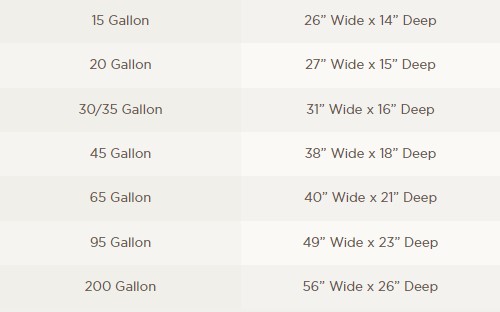
Now we can look at different scenarios to see which trees might be the best fit for your needs.
Best trees for large yards (1/2 Acre of more):
You have room for all of the available evergreen options and now you just have to decide which design style you like best, which tree or trees are your favorite, and how far you want to space them. Checkout these install examples completed at large properties to get inspired.
Eagleston Holly (full to ground or tree form– Grows to 20’H x 14’W
Eastern Red Cedar- Grows to 25’H x 20’W
Eastern Red Cedar ‘Brodie’- Grows to 25’H x 12’W
Eastern Red Cedar ‘Burkii’- Grows to 25’H x 20’W
Eastern Red Cedar ‘Taylor’- Grows to 30’H x 4’W
Little Gem Magnolia- Grows to 20’H x 14’W
Nellie R. Stevens Holly- Grows to 16’H x 12’W
Oakland Holly- Grows to 16’H x 7’W
Best trees for small yards:
Eagleston Holly (full to ground or tree form)– Grows to 20’H x 14’W
Eastern Red Cedar ‘Brodie’- Grows to 25’H x 12’W
Eastern Red Cedar ‘Taylor’- Grows to 30’H x 4’W
Little Gem Magnolia- Grows to 20’H x 14’W
Nellie R. Stevens Holly- Grows to 16’H x 12’W
Oakland Holly- Grows to 16’H x 7’W
Best trees for narrow spaces between pools & fences:
Eagleston Holly (tree form)– Grows to 20’H x 14’W
Eastern Red Cedar ‘Taylor’- Grows to 30’H x 4’W
Best trees for wrought iron fences:
Eagleston Holly (full to ground)– Grows to 20’H x 14’W
Eastern Red Cedar- Grows to 25’H x 20’W
Eastern Red Cedar ‘Brodie’- Grows to 25’H x 12’W
Eastern Red Cedar ‘Burkii’- Grows to 25’H x 20’W
Eastern Red Cedar ‘Taylor’- Grows to 30’H x 4’W
Little Gem Magnolia- Grows to 20’H x 14’W
Nellie R. Stevens Holly- Grows to 16’H x 12’W
Oakland Holly- Grows to 16’H x 7’W
On to the fun part, let’s check out some inspiration pictures.
Screens installed on a small property (The first picture is my personal backyard with Eagleston Hollies installed 7.5′ trunk to trunk.)
Screens installed on a large property
Screens installed in a narrow space
Screen installed in a straight line
Screens installed in a window formation
Screens installed using varying spacing
Screens created with berms *important to note that the berms must be in place before we install*
A few fun pictures to show what a difference some growth and adding a privacy screen makes.
Congrats, you made it to the end, and I hope this blog was helpful in your planning of the perfect privacy screen. I tried to include all our F.A.Q. and my favorite tips. We have completed thousands of privacy screen installs across DFW and are here to help you with any questions. Reach out the office by emailing us at sales@treelandnursery.com and make sure to view our price list online and our many photo galleries.
-Denise














